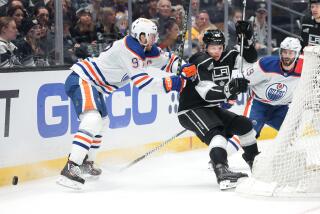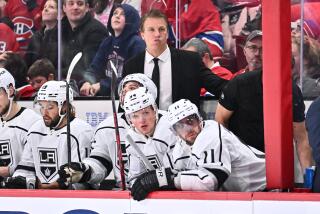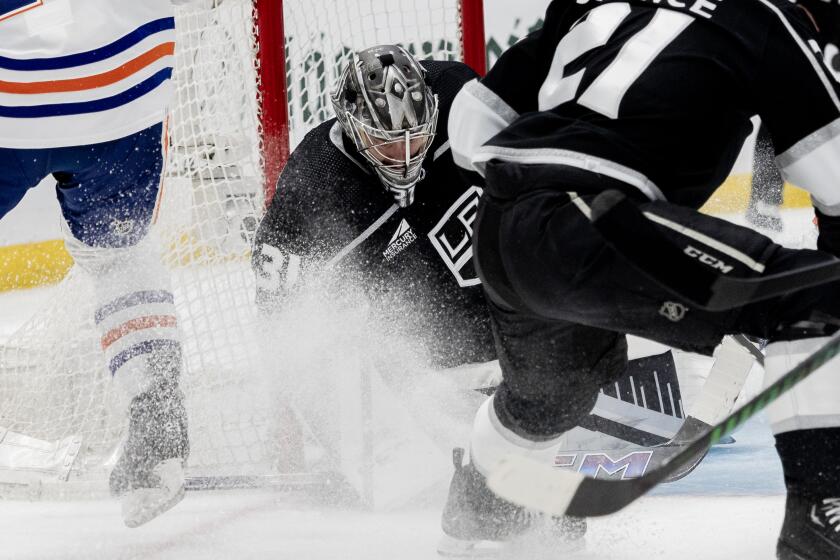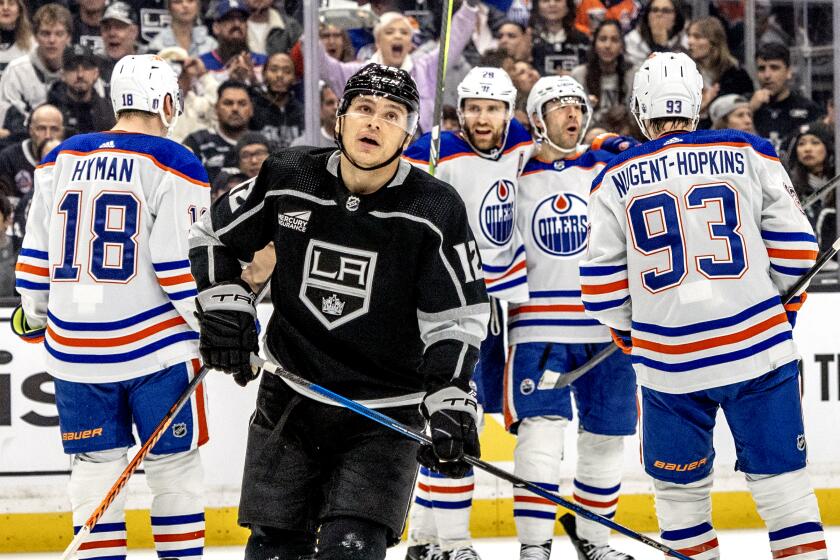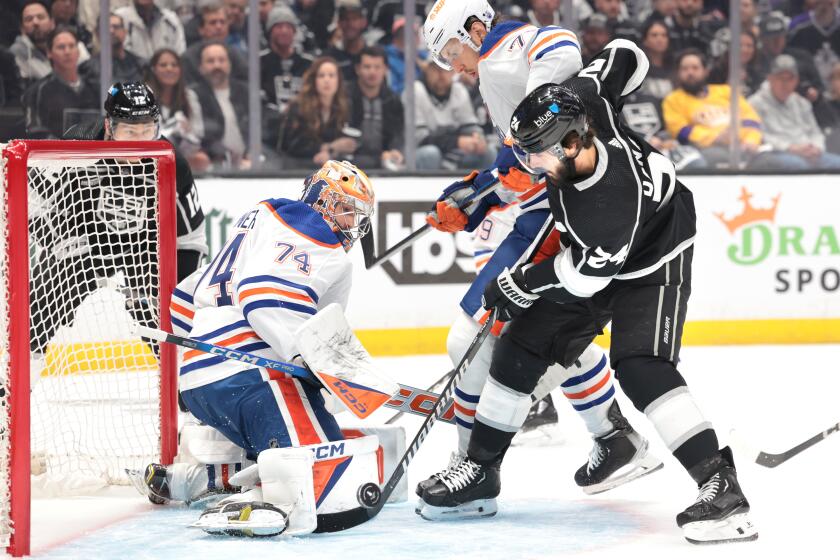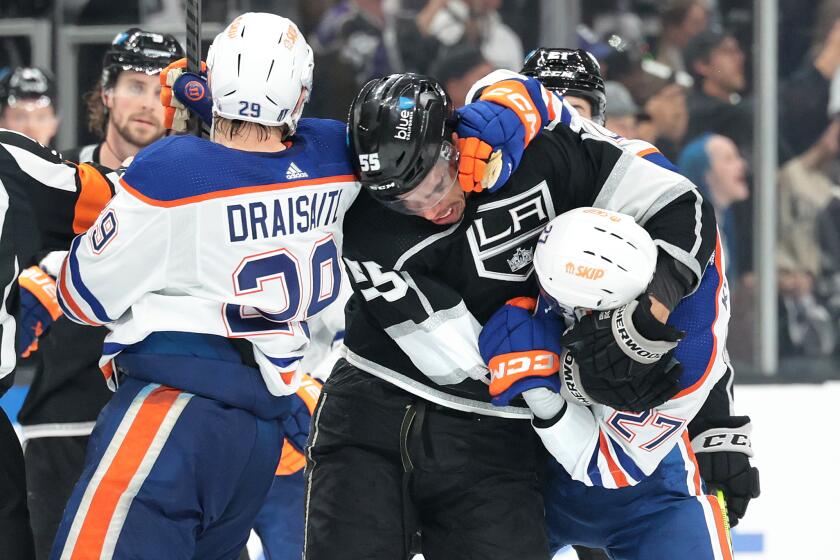Murray to see what he did for Ducks
A number of thoughts crossed Bryan Murray’s mind as the Ottawa Senators’ bus pulled up to the Honda Center on Sunday afternoon.
Three years had passed since Murray left the Ducks’ organization to coach the Senators and, by a quirk in NHL scheduling, this was his first time back in Anaheim.
He mused about the Ducks team he had helped build as general manager and the front-office staff with whom he had worked, the sunny Southern California days when they had walked to a nearby restaurant for lunch.
But as Murray got off the bus and entered a series of concrete hallways beneath the arena, a new thought arose.
“I couldn’t find the visitor’s locker room,” he said. “I sort of knew where it was, but I didn’t know which door.”
Take a sharp right at the parked Zamboni, down a concrete hallway, then a jog to the left.
“All the time I was here,” he said, “I never went in there.”
It was ironic for Murray to feel lost in this building, given the generally sure-handed manner in which he made the home team into a winner. His fingerprints are all over the Ducks roster that will face Ottawa in Game 1 of the Stanley Cup finals today.
During his front-office stint from 2002 to 2004, the team traded for an underappreciated Rob Niedermayer, signed Dustin Penner as a free agent and drafted future standouts Ryan Getzlaf and Corey Perry.
“He meant a lot to this organization,” goaltender Jean-Sebastien Giguere said. “You’ve really got to give him credit.”
As veteran Andy McDonald put it: “There wasn’t a lot of success here before he came in.”
Murray started as the team’s coach in 2001. He recalls the Honda Center -- then the Pond -- as a “dark and gloomy” place with plenty of empty seats in those days.
The expansion franchise had struggled through mediocre seasons, but all that changed fairly quickly. After one season behind the bench, Murray switched to general manager and put together a Cinderella team that made a run to the 2003 Stanley Cup finals, losing in seven games to the New Jersey Devils.
“The energy in the building was unbelievable,” he said. “It showed me that hockey can do well in Southern California if you give people something to cheer for.”
Ottawa came calling soon after. Though most hockey careers track the opposite direction -- from bench to front office -- Murray had his reasons for going backward.
The Shawville, Quebec, native had family, including a seriously ill father, in the area. And the Ducks faced an uncertain future, with the Walt Disney Co. looking to sell the team.
Most of all, he missed coaching.
Even as a general manager, McDonald said, “he was still around the team quite a bit. He always tried to stay in contact with the players.”
The Senators got a coach whose years in the league -- and snow-white hair -- speak to a degree of hockey wisdom. His relatively easygoing manner can give way to flashes of intensity.
Players say that, ultimately, he is a man intent on winning.
This season, the 64-year-old Murray calmly guided Ottawa through a sluggish start, then reversed a franchise history of playoff disappointments.
“His leadership throughout our tough times was crucial,” captain Daniel Alfredsson said. “He was poised during that time, and I think that reflected on us.”
It should come as no surprise that, even as Murray guided his new team into the playoffs, he kept an eye on his old team.
“Sure, I took a lot of pride in that,” he said. “You always feel good when players you looked at at 18 years of age develop into stars in the NHL.”
So, his return to Anaheim on Sunday prompted fond memories. Murray said he looks forward to chatting with some of his former players, though he figures “they probably won’t want to talk to me until this is over.”
In the meantime, there is the matter of guiding the Senators to a Stanley Cup.
“My focus right now will be totally on Ottawa,” he said.
Walking into the Honda Center, he nodded “hello” to a few acquaintances and stopped to shake a few hands. Then it was time to get ready for practice, the coach heading quickly to his locker room.
Just as soon as he figured out where it was.
More to Read
Go beyond the scoreboard
Get the latest on L.A.'s teams in the daily Sports Report newsletter.
You may occasionally receive promotional content from the Los Angeles Times.
